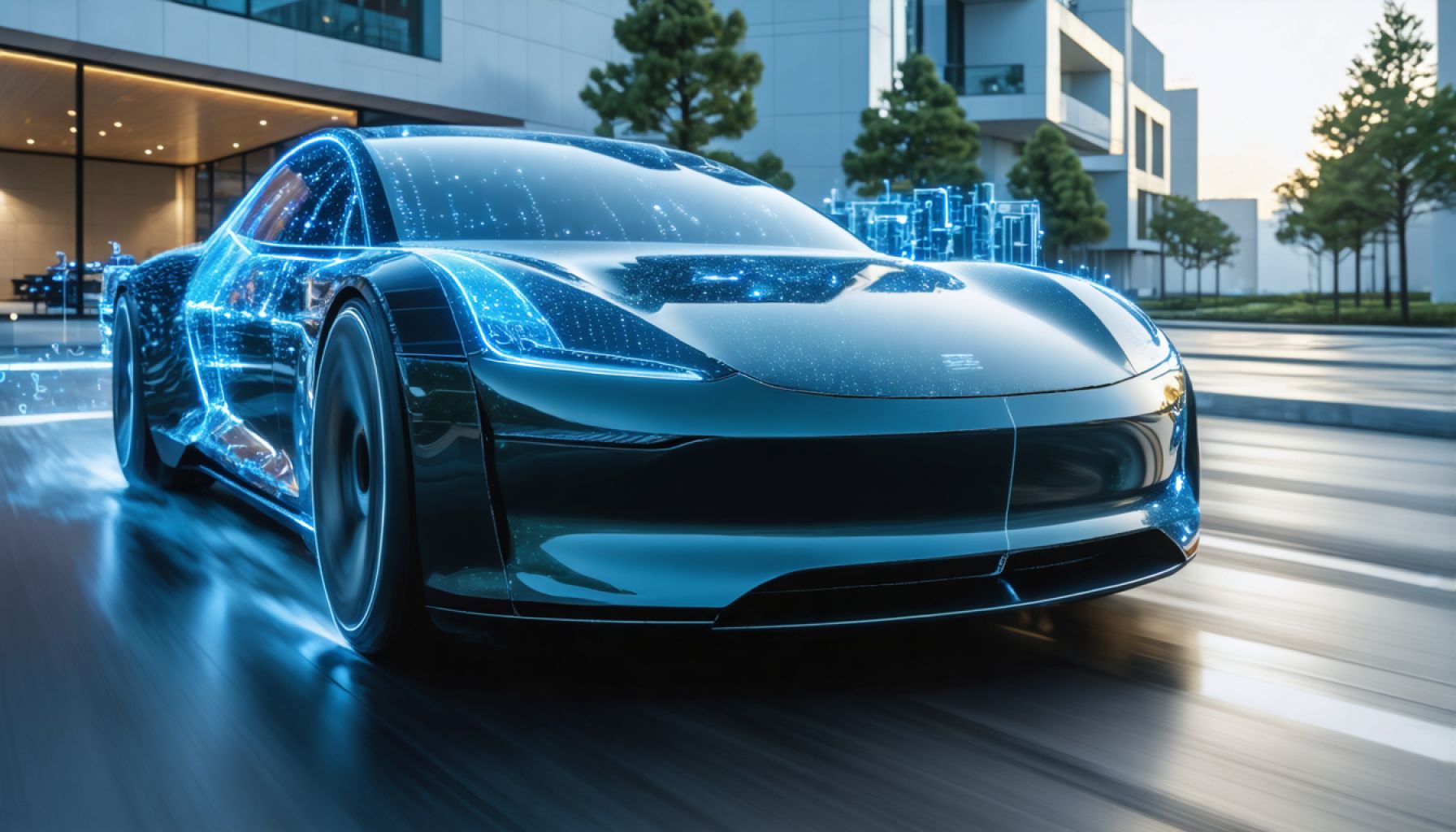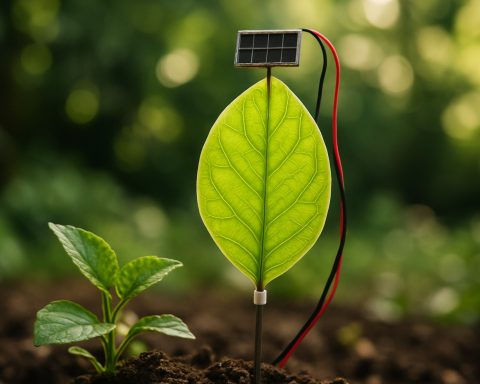- An innovative anode incorporating hard carbon and tin nanoparticles improves the performance of EV batteries, reducing charging times and extending longevity.
- The research was conducted by POSTECH and KIER, utilizing a sol-gel process to enhance tin stability and prevent swelling during charging cycles.
- Tests revealed a 1.5x increase in energy density, allowing EVs to travel longer distances without needing larger battery packs.
- The new anode design supports over 1,500 rapid charge cycles, reducing range anxiety and making fast charging feasible.
- The innovation has potential applications beyond lithium-ion batteries, benefiting sodium-ion technologies for broader eco-friendly use.
- Scaling production presents a challenge, but the breakthrough aligns with global goals for a sustainable energy transition.
A groundbreaking discovery in South Korea is steering the electric vehicle (EV) revolution toward a new horizon. By unraveling the mysteries of battery limitations, researchers have introduced an innovative anode that addresses both the protracted charging times and the longevity of EV batteries. This advancement could accelerate the transition from gas-powered cars to EVs, amid skyrocketing demand for sustainable transportation solutions.
Inside the laboratories of POSTECH and the Korea Institute of Energy Research (KIER), scientists have crafted an anode material that infuses hard carbon with minuscule tin nanoparticles. The partnership of these materials is more than just alchemy; it’s a scientific tour de force. Hard carbon’s porous nature invites lithium ions—the energy carriers—to maneuver swiftly, curbing the notorious lag in charging speeds found in traditional graphite anodes.
However, adding tin is not just a trivial enhancement. Known for its capacity to store energy, tin historically tends to swell and deteriorate during charging cycles—a notorious challenge for researchers. Through the ingenious application of a sol-gel process followed by thermal reduction, the team managed to embed tin nanoparticles, smaller than 10 nanometers, uniformly within the hard carbon matrix. This prevents detrimental swelling and facilitates a symbiotic relationship where tin not only boosts the anode’s performance but also elevates energy storage through chemical interplay.
Extensive testing has validated the prowess of these lithium-ion batteries, showing a staggering 1.5 times increase in energy density over traditional graphite-based versions. More than just numbers, this translates to EVs capable of longer distances without enlargement of battery packs—an enticing prospect for manufacturers and consumers alike. Furthermore, with the ability to endure over 1,500 rapid charge cycles, range anxiety and prolonged charging are poised to be relics of the past.
The implications of this research reach beyond just lithium-ion applications. Sodium-ion batteries, a cost-effective and eco-friendly alternative, could also benefit from this material innovation. Historically shunned due to poor reactivity with graphite or silicon, sodium ions find a stable home in the hard carbon–tin composite, heralding a versatile future for various battery technologies.
While scaling up production remains a looming challenge, the potential of this anode design is undeniable. It invites a future where powering an EV could be as routine and swift as topping up at a gas station, with the longevity to spare. Such breakthroughs not only promise a leap forward for electric vehicles but also align with the global urge to expedite the clean energy transition.
What emerges from this revelation is not just an upgraded component but a pivotal milestone in battery evolution. A new epoch may soon charge onto the scene, challenging us to envision a world where advanced batteries drive not just our cars, but our entire sustainable future.
Revolutionary Anode Innovation: Transforming the Future of Electric Vehicle Batteries
Understanding the Breakthrough in Electric Vehicle (EV) Battery Technology
Electric vehicles (EVs) are transforming how we think about sustainable transportation, yet the limitations of battery technology remain a significant barrier to wider adoption. A recent groundbreaking advancement from researchers in South Korea might just be the game-changer the industry needs. Scientists from the Pohang University of Science and Technology (POSTECH) and the Korea Institute of Energy Research (KIER) have developed an innovative anode material by integrating hard carbon with tin nanoparticles. This innovation promises to enhance charging speeds and increase the lifespan of lithium-ion batteries, thus propelling the EV revolution forward.
Dissecting the Anode Innovation
Hard Carbon and Tin Nanoparticles:
– Hard Carbon’s Role: Known for its porous nature, hard carbon allows for the swift movement of lithium ions. This characteristic significantly reduces charging times compared to conventional graphite anodes.
– Tin Nanoparticles’ Contribution: Adding tin enhances the anode’s energy storage capability. Although tin can swell and degrade during charge cycles, the strategic embedding of tin nanoparticles within hard carbon prevents these issues, thereby preserving the anode’s structural integrity and longevity.
Impact on Battery Performance
The integration of hard carbon and tin nanoparticles results in a 1.5 times increase in energy density compared to traditional graphite-based batteries. This improvement implies that EVs will require smaller battery packs to achieve the same range, or they could extend their range significantly without enlarging the packs.
Additionally, the enhanced durability of these batteries allows them to withstand over 1,500 rapid charge cycles, effectively mitigating common concerns about range anxiety and lengthy charging times.
Expanding to Sodium-Ion Batteries
While lithium-ion remains the dominant technology for EVs, the innovation shows promise for sodium-ion batteries—an emerging, cost-effective alternative. Sodium-ion technology has historically been constrained by poor compatibility with graphite or silicon; however, the hard carbon–tin composite appears to offer a more stable and efficient solution. This could open doors to a wider range of applications and even more sustainable battery options.
Market Forecast and Industry Trends
As EV demand continues to surge, the race to improve battery technology is intensifying. According to Mordor Intelligence, the global electric vehicle battery market is expected to reach significant growth, with cutting-edge technologies like the one from POSTECH and KIER at the forefront.
Life Hacks and Real-World Use Cases
1. Faster Charging: Imagine EV charging stations becoming as ubiquitous and quick as gas stations, reducing downtime and encouraging more drivers to switch to electric.
2. Longer Battery Life: With batteries that sustain over 1,500 charge cycles, EV owners will enjoy a longer lifespan for their vehicles, thus reducing long-term ownership costs.
3. Broader Application: This technology could extend to other energy storage systems, such as home renewable energy setups, providing a versatile solution across sectors.
Challenges and Considerations
While the potential of this innovation is vast, scaling up production remains a critical challenge. Mass-producing these advanced anodes while maintaining quality and cost-effectiveness requires substantial investment and technological refinement.
Quick Tips and Actionable Recommendations
– For Consumers: If you’re considering an EV purchase, keep an eye on advancements in battery technology. These innovations could soon offer vehicles with faster charging and longer ranges.
– For Investors and Industry Players: Aligning investments with emerging technologies like advanced anodes could yield significant returns as the market for sustainable transportation expands.
– For Policymakers: Supporting research and development in battery technologies can drive economic growth and align with environmental goals.
Final Thoughts
As research continues to unveil groundbreaking advancements in battery technology, the path to a more sustainable and efficient future is becoming clearer. These innovations not only cater to the current needs of the electric vehicle market but also have the potential to revolutionize how we store and use energy across different applications.
For those interested in staying updated on these developments, exploring resources on sustainable innovation is recommended. A great place to start would be POSTECH for ongoing research and industry insights.










